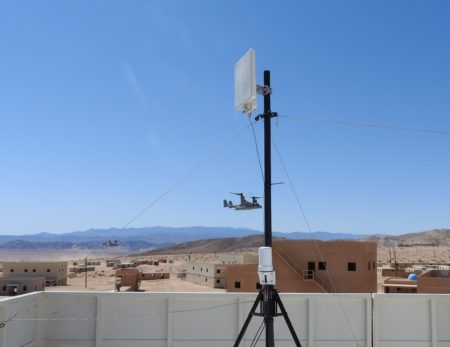Border security networks need to transmit information in a way that is safe, dependable, and flexible. Cambium Networks supports the design of border security networks by understanding and anticipating the challenges associated with designing both domestic and international networks.
Bob Shaw, GDS Engineering Manager, brings his decades of experience in the field with microwave radio technology to tackle this discussion of how border security networks are evolving with wireless technology to master the challenges of today and tomorrow.
What are some unique needs of border security networks?
Bob: By far the most unique need on any border application has to do with the physical nature of borders. For example, in international applications, protecting the water borders can be challenging because the ocean is a vast unmonitored space.
Another example is the longest international border in the world between the U.S. and Canada, featuring immense stretches of empty land where there is no infrastructure. These spaces have additional challenges including especially rugged terrains, lack of power and extreme climate variations.
Cambium Networks wireless technology not only succeeds at connecting these large and rugged areas – providing the networks for their communications and surveillance applications – but we are also able to do it in a rugged, small form factor designed to operate reliably despite extreme climate conditions. It’s very power efficient because power ultimately becomes very critical. The cost of providing power is significantly reduced when comparing Cambium Networks solutions with other technologies.
In today’s challenging political climate, how does an upgraded wireless system impact border control?
Bob: Whatever the national security priorities of the day, the goal is to have control of your borders to the best degree possible, in a way that is both effective and gives customers the ability to do their job as well. If border security personnel can be more productive with what they have, they are going to do a better job. In addition, reliable surveillance means you have less cost. Less cost means happy taxpayers.
What are the specific information needs of border security networks?
Bob: There are three main requirements: very high throughput, very low latency, and high reliability. The network needs the capacity for both today’s requirements and future growth. We need very low latency to be reactive – for instance, to command a camera to turn rapidly. Border security networks must have products that do not go down. They must have the ability to create fail-over or redundancy schemes, both on individual devices as well as the network itself.
What are best practices for border security network design?
Bob: Number one is understanding the security requirements; second, designing for robustness. That’s where Cambium Networks’ LINKPlanner software aids in designing a configuration that overcomes the challenges of the physical nature of the environment. With experience, flexibility, and creativity, the network can be installed in very rugged locations. There is an example of an antenna that was lost in 200-mile-an-hour winds. We created something called the “connectegrated” radio, which is actually an integrated flat panel antenna built onto the radio, but also connects to an external antenna. If the antenna gets blown away, you have the option to turn on the integrated flat panel antenna [remotely via software] to re-establish a link until you can get there to repair it.
How can a customer monitor their system and evaluate their investment?
Bob: They are using both human monitoring, where you have people in a network operations center that are monitoring our equipment, along with all the other equipment that they are using. Those applications such as video surveillance, ground sensors, radars, motion detection, etc. are monitored together. A customer can measure whether they’ve made a good investment from two different factors: the system operates properly; the system is reliable and doesn’t have failure. It is a necessity that these customers can count on these two things in the long term.
What is the reaction of border patrol agents since the deployment? Are they satisfied with the results?
Bob: They are very satisfied. I was involved with a recent installation in Arizona that took me to Tombstone. The agents appreciate that they can call in and be told what is going on around them with a high degree of confidence. And their teams and the surveillance centers can be more effective in doing their job because they are getting a highly reliable situational picture, along with the ability to direct resources where they are needed, when they are needed.
